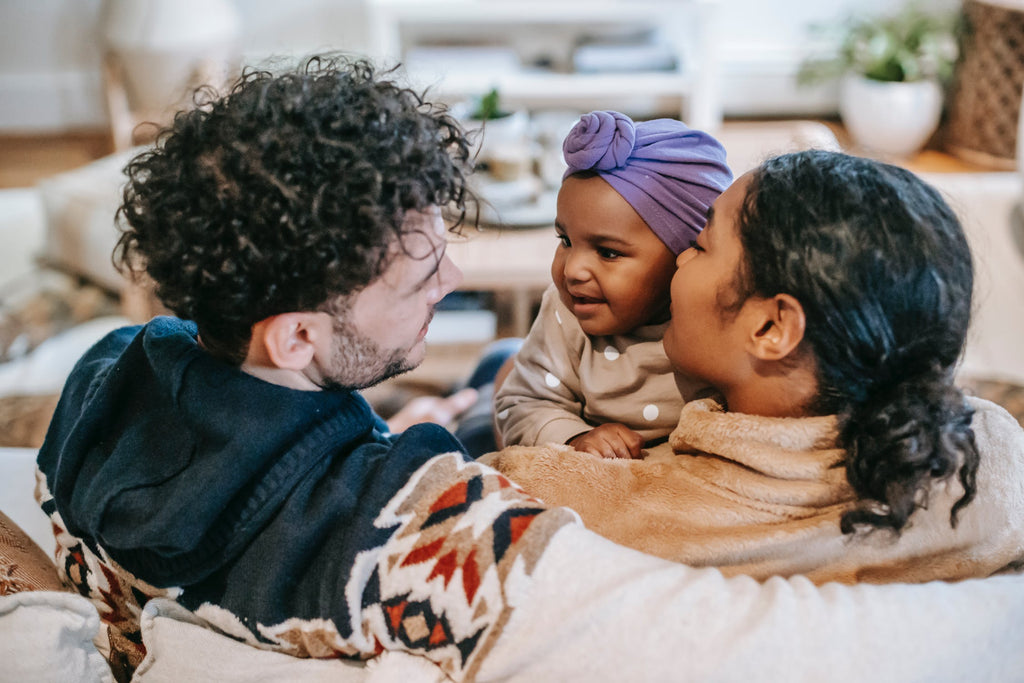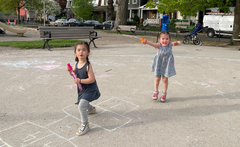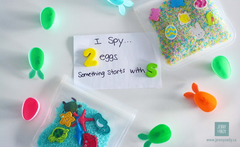
From birth throughout childhood, children use their senses to explore the environment and make sense of the world around them, the way Max learned about his rattle in the scenario described above.
When children engage in play that stimulates their various senses, such as touch, sight, hearing, taste (and smell), movement, and balance, they are engaging in sensory play. Sensory play is critical for infants' and babies' understanding of the world and learning as they grow and reach important developmental milestones.
In this post, we’ll touch on 6 key benefits of sensory play:
- Helps build neural pathways in the brain
- Encourages experimentation and problem solving
- Helps develop motor skills
- Supports speech and language skills
- Helps regulate emotions
- Fosters creativity and imagination
1. Helps Build Neural Pathways In The Brain
When babies and young children engage in sensory play, this actually affects the physical development of their brain! As your little one makes sense of and learns about their world, they are using their senses to take in the environment.
Research has shown that a newborn’s brain develops 2-3 million synapses per second. These synapses forge the route for sensory messages to reach the brain. The more synapses that are used, the more quickly these become permanent.
In other words, as children develop a better understanding of their environment through their senses, they build pathways between neurons in the brain that tell them whether or not it's safe or enjoyable to engage with an object. The more they experience something, the stronger that pathway becomes. Unfortunately, if a pathway is not used enough, it weakens and can disappear too, the way a skill can weaken without enough practice.
When connections in a child’s brain are strengthened, more complex thoughts begin to form and more complex tasks can be carried out.

2. Encourages Experimentation and Problem Solving
When Max was trying to figure out how to recreate the rattle sound, he was able to determine that putting the toy to his mouth did not achieve his goal, but every time he moved it, the bell inside would sound. In play experiences, combining the senses helps build cognitive skills.
Cognitive skills are the skills that we use to solve problems and derive new ideas from current ideas. Children observe, experiment, and make conclusions, and when they receive sensory information, their brains learn to determine which information is important and which is not.
Pulling objects out of the way, moving them around, and opening/closing things are a few ways that children can practice problem solving in sensory play. Burying objects, using sticky materials are all great ways to give your child the freedom to problem solve on their own.

3. Helps Develop Motor Skills
Motor development can be divided into two main groups: fine motor and gross motor. Fine motor skills are those that require the use of smaller muscle groups that are important for grasping, pinching, and manipulating objects while gross motor skills that involve large muscle movements like sitting independently, walking, and running.
Fine Motor
Your little one uses touch as their main method to engage with the world. As they learn to grasp, bang, pull, pinch, and shake different objects, they strengthen their muscles and prepare to perform more fine motor tasks like pointing, using utensils, drinking from a cup, and eventually speaking, buttoning, and writing.
Gross Motor
As your little one attempts to roll and crawl towards sounds and sights, they strengthen their gross motor muscles. Gross motor skills are also related to other abilities like balance, coordination, physical strength, body awareness, and reaction time. Encourage your little one to get moving by having him or her explore different textures like fluffy rugs, spongey playmats, and smooth surfaces.

4. Supports Speech and Language Development
A whole new world of language can be introduced with sensory play. Sensory exploration can provide opportunities to stimulate language within a functional and meaningful context. Teaching language in a natural way is critical for early language development.
When playing, talk about whether something is hard or soft, if it tastes sweet or sour, if it’s loud or quiet. Point out and label common objects. This teaches your little one common vocabulary and words that describe his or her world, expanding their language and vocabulary.

5. Helps Regulate Emotions
Have you ever noticed that you find certain sensations soothing and satisfying? Like hearing the crackle of a fresh baguette or the tingly feeling you get when you use a head massager. This is also true for children.
Certain sensory activities and experiences can be calming for some children. When children learn what calms them down, they can more readily regulate their emotions and internal discomfort and learn to deal with challenging situations. Appropriate sensory activities may be especially important for those with exceptionalities, like children with autism, who may have a harder time with self-regulation.

6. Fosters Creativity and Imagination
Because sensory play is open-ended, meaning there are no specific instructions or rules to follow, children have the ability to express their creativity freely. Unlike more closed-ended activities, there is no right or wrong way to play.
During open-ended play, children are allowed to make their own decisions and fully engage their creativity and imagination.

Encourage Sensory Play with Jenny and Andy
At Jenny & Andy, we aim to produce creative solutions for real world use by today's family - combining innovative design with sustainably sourced materials that are always safe for baby.
Engage in sensory play, as baby begins to recognize sound and texture and reach various developmental milestones with Jenny and Andy’s Intro Toy Bundle.
Remember, there are tons of benefits to sensory play that can go unnoticed. Keep this list in mind and look for learning opportunities as you play with your little one!
About the author:
Sam is a trained speech therapy associate and behaviour therapist who spent 5 years working with young toddlers with autism and other exceptionalities and their families.
Her therapy sessions required her to work collaboratively with Speech-Language Pathologists, Board Certified Behaviour Therapists, Occupational Therapists, Teachers, and Registered Early Childhood Educators.





